Pressure-Induced Transformation of Graphite and Diamond to Onions
Abstract
:1. Introduction
2. Materials and Methods
3. Results
3.1. Onion Formation from Graphite and MWCNT
3.2. Onion Formation from Diamond
4. Discussion
5. Conclusions
Acknowledgments
Author Contributions
Conflicts of Interest
References
- Blank, V.D.; Churkin, V.D.; Kulnitskiy, B.A.; Perezhogin, I.A.; Kirichenko, A.N.; Denisov, V.N.; Erohin, S.V.; Sorokin, P.B.; Popov, M.Y. Phase diagram of carbon and the factors limiting the quantity and size of natural diamonds. Nanotechnology 2018, in press. [Google Scholar] [CrossRef] [PubMed]
- Popov, M.; Kulnitskiy, B.; Blank, V. Superhard materials, based on fullerenes and nanotubes. Compr. Hard Mater. 2014, 3, 515–538. [Google Scholar]
- Gust, W.H. Phase transition and shock compression parameters to 120 GPa for three types of graphite and for amorphous carbon. Phys. Rev. B 1980, 22, 4744–4756. [Google Scholar] [CrossRef]
- Blank, V.D.; Denisov, V.N.; Kirichenko, A.N.; Kulnitskiy, B.A.; Martushov, S.Y.; Mavrin, B.N.; Perezhogin, I.A. High pressure transformation of single-crystal graphite to form molecular carbon–onions. Nanotechnology 2007, 18, 345601. [Google Scholar] [CrossRef]
- Pankov, A.M.; Bredikhina, A.S.; Kulnitskiy, B.A.; Perezhogin, I.A.; Skryleva, E.A.; Parkhomenko, Y.N.; Blank, V.D. Transformation of multiwall carbon nanotubes to onions with layers cross-linked by sp3 bonds under high pressure and shear deformation. AIP Adv. 2017, 7, 085218. [Google Scholar] [CrossRef]
- Pashkin, E.Y.; Pankov, A.M.; Kulnitskiy, B.A.; Perezhogin, I.A.; Karaeva, A.R.; Mordkovich, V.Z.; Popov, M.Y.; Sorokin, P.B.; Blank, V.D. The unexpected stability of multiwall nanotubes under high pressure and shear deformation. Appl. Phys. Lett. 2016, 109, 081904. [Google Scholar] [CrossRef]
- Zhu, Y.Q.; Sekine, T.; Kobayashi, T.; Takazawa, E.; Terrones, M.; Terrones, H. Collapsing carbon nanotubes and diamond formation under shock waves. Chem. Phys. Lett. 1998, 287, 689–693. [Google Scholar] [CrossRef]
- Zhu, Y.Q.; Sekine, T.; Brigatti, K.S.; Firth, S.; Tenne, R.; Rosentsveig, R.; Kroto, H.W.; Walton, D.R. Shock-Wave Resistance of WS2 Nanotubes. J. Am. Chem. Soc. 2003, 125, 1329–1333. [Google Scholar] [CrossRef] [PubMed]
- Blank, V.D.; Estrin, E.I. Phase Transitions in Solids under High Pressure; CRC Press: Boca Raton, FL, USA, 2014. [Google Scholar]
- Lobodyuk, V.A.; Estrin, E.I. Martensitic Transformations; Cambridge International Science Publishing: Cambridge, UK, 2014; p. 538. [Google Scholar]
- Popov, M. Stress-induced phase transition in diamond. High Press. Res. 2010, 30, 670–678. [Google Scholar] [CrossRef]
- Blank, V.D.; Aksenenkov, V.V.; Popov, M.Y.; Perfilov, S.A.; Kulnitskiy, B.A.; Tatyanin, Y.V.; MZhigalina, O.; Mavrin, B.N.; Denisov, V.N.; Ivlev, A.N.; et al. A new carbon structure formed at MeV neutron irradiation of diamond: Structural and spectroscopic investigations. Diam. Relat. Mater. 1999, 8, 1285–1290. [Google Scholar] [CrossRef]
- Blank, V.; Popov, M.; Buga, S.; Davydov, V.; Denisov, V.N.; Ivlev, A.N.; Marvin, B.N.; Agafonov, V.; Ceolin, R.; Szwarc, H.; et al. Is C 60 fullerite harder than diamond? Phys. Lett. A 1994, 188, 281–286. [Google Scholar] [CrossRef]
- Popov, M. Pressure measurements from Raman spectra of stressed diamond anvils. J. Appl. Phys. 2004, 95, 5509–5514. [Google Scholar] [CrossRef]
- Karaeva, A.R.; Khaskov, M.A.; Mitberg, E.B.; Kulnitskiy, B.A.; Perezhogin, I.A.; Ivanov, L.A.; Denisov, V.N.; Kirichenko, A.N.; Mordkovich, V.Z. Longer Carbon Nanotubes by Controlled Catalytic Growth in the Presence of Water Vapor. Fuller. Nanotub. Carbon Nanostruct. 2012, 20, 411–418. [Google Scholar] [CrossRef]
- Popov, M.; Churkin, V.; Kirichenko, A.; Denisov, V.; Ovsyannikov, D.; Kulnitskiy, B.; Perezhogin, I.; Aksenenkov, V.; Blank, V. Raman spectra and bulk modulus of nanodiamond in a size interval of 2–5 nm. Nanoscale Res. Lett. 2017, 12, 561. [Google Scholar] [CrossRef] [PubMed]
- Stuart, J.S.; Tutein, B.A.; Harrison, J.A. A Reactive Potential for Hydrocarbons with Intermolecular Interactions. J. Chem. Phys. 2000, 112, 6472–6486. [Google Scholar] [CrossRef]
- Weinstein, B.A.; Zallen, R. Pressure-Raman Effects in Covalent and Molecular Solids. In Light Scattering in Solids; Cardona, M., Guntherodt, G., Eds.; Springer: Berlin, Germany, 1984; Volume IV, p. 543. [Google Scholar]
- Blank, V.D.; Kulnitskiy, B.A.; Perezhogin, I.A.; Tyukalova, E.V.; Denisov, V.N.; Kirichenko, A.N. Graphite-to-diamond (13C) direct transition in a diamond anvil high-pressure cell. Int. J. Nanotechnol. 2016, 13, 604–611. [Google Scholar] [CrossRef]
- Balaban, A.T.; Klein, D.J.; Folden, C.A. Diamond-graphite hybrids. Chem. Phys. Lett. 1994, 217, 266–270. [Google Scholar] [CrossRef]
- Hiura, H.; Ebbesen, T.W.; Fujita, J.; Tanigaki, K.; Takada, T. Role of sp3 defect structures in graphite and carbon nanotubes. Lett. Nat. 1994, 367, 148–151. [Google Scholar] [CrossRef]
- Hanfland, M.; Syassen, K.; Fahy, S.; Louie, S.G.; Cohen, M.L. Pressure dependence of the first-order Raman mode in diamond. Phys. Rev. B 1985, 31, 6896–6899. [Google Scholar] [CrossRef]
- Ugarte, D. Curling and closure of graphitic networks under electron-beam irradiation. Nature 1992, 359, 707–709. [Google Scholar] [CrossRef] [PubMed]
- Kuznetsov, V.L.; Chuvilin, A.L.; Butenko, Y.V.; Malkov, I.L.; Titov, V.M. Onion-like carbon from ultra-disperse diamond. Chem. Phys. Lett. 1994, 222, 343–348. [Google Scholar] [CrossRef]
- Sano, N.; Wang, H.; Chhowalla, M.; Alexandrou, I.; Amaratunga, G.A.J. Nanotechnology: Synthesis of carbon ‘onions’ in water. Nature 2001, 414, 506–507. [Google Scholar] [CrossRef] [PubMed]
- Cabioc’h, T.; Kharbach, A.; Roy, A.L.; Riviere, J.P. Fourier transform infra-red characterization of carbon onions produced by carbon-ion implantation. Chem. Phys. Lett. 1998, 285, 216–220. [Google Scholar] [CrossRef]
- Abe, U.; Yamamoto, S.; Miyashita, A. In situ TEM observation of nucleation and growth of spherical graphitic clusters under ion implantation. J. Electron. Microsc. 2002, 51, S183–S187. [Google Scholar] [CrossRef]
- Blank, V.D.; Kulnitskiy, B.A.; Perezhogin, I.A. Structural Peculiarities of Carbon Onions, Formed by Four Different Methods: Onions and Diamonds, Alternative Products of Graphite High-Pressure Treatment. Scr. Mater. 2009, 60, 407–410. [Google Scholar] [CrossRef]
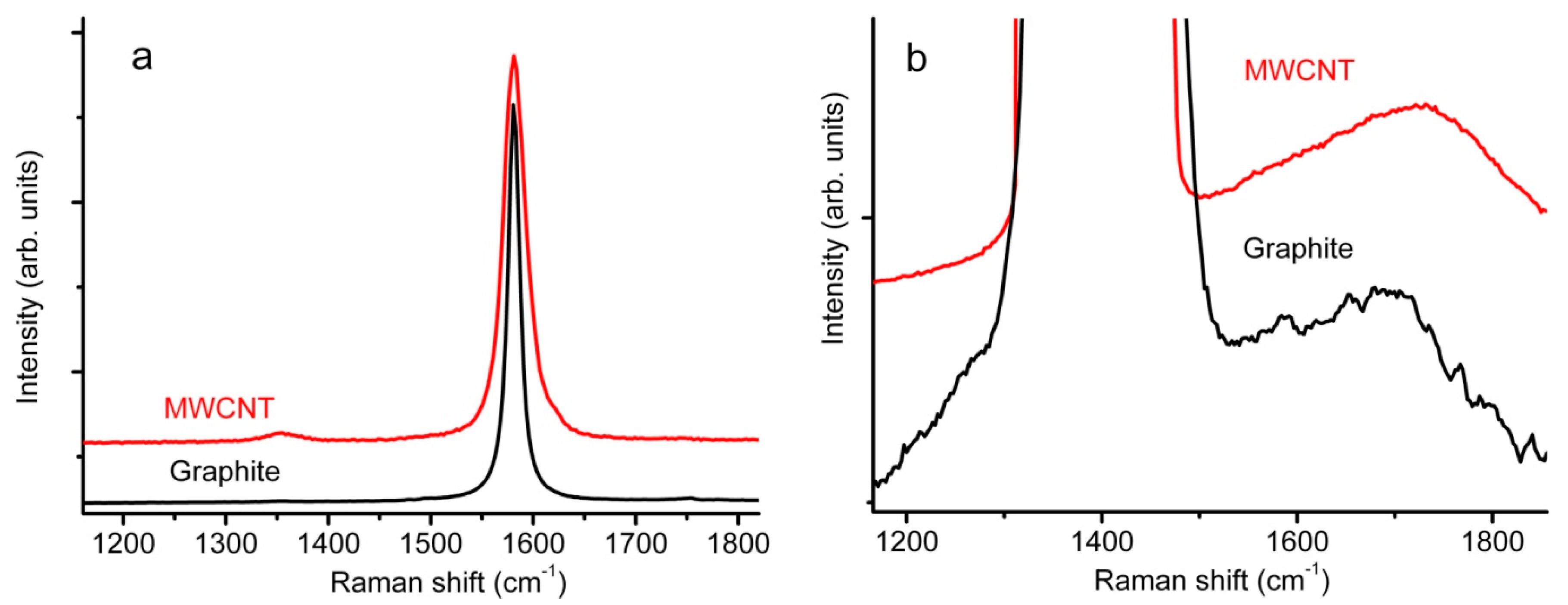
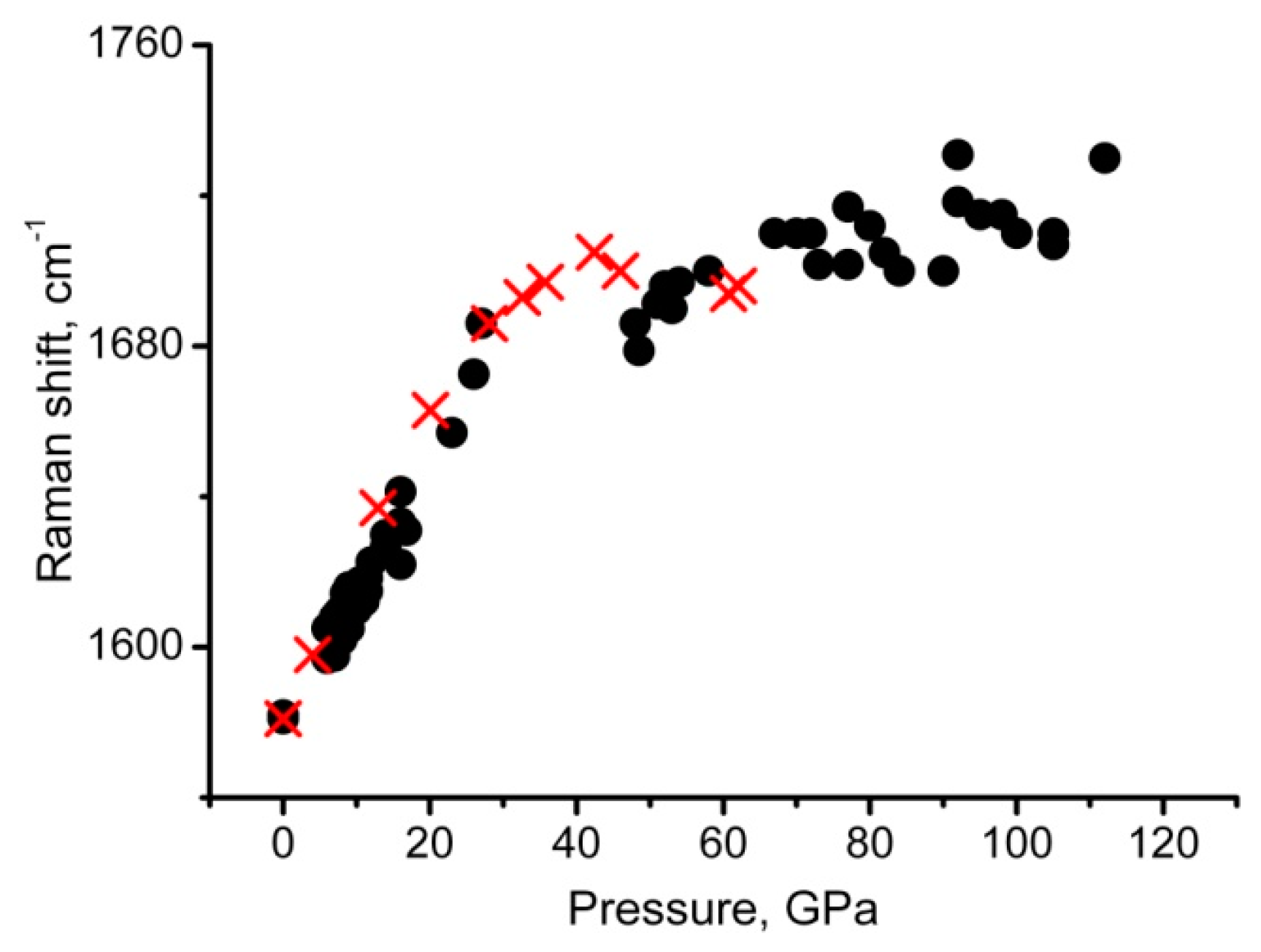
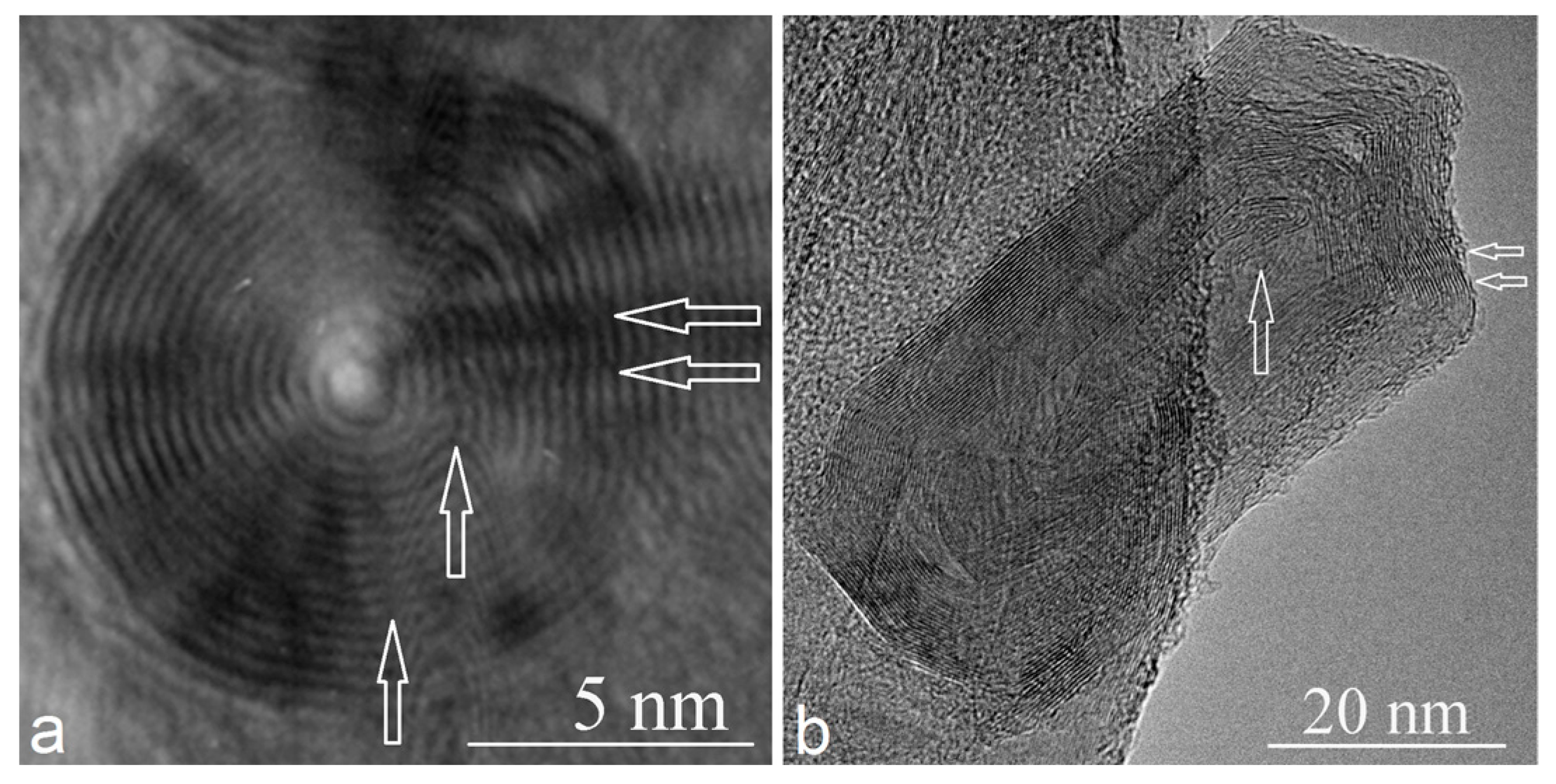
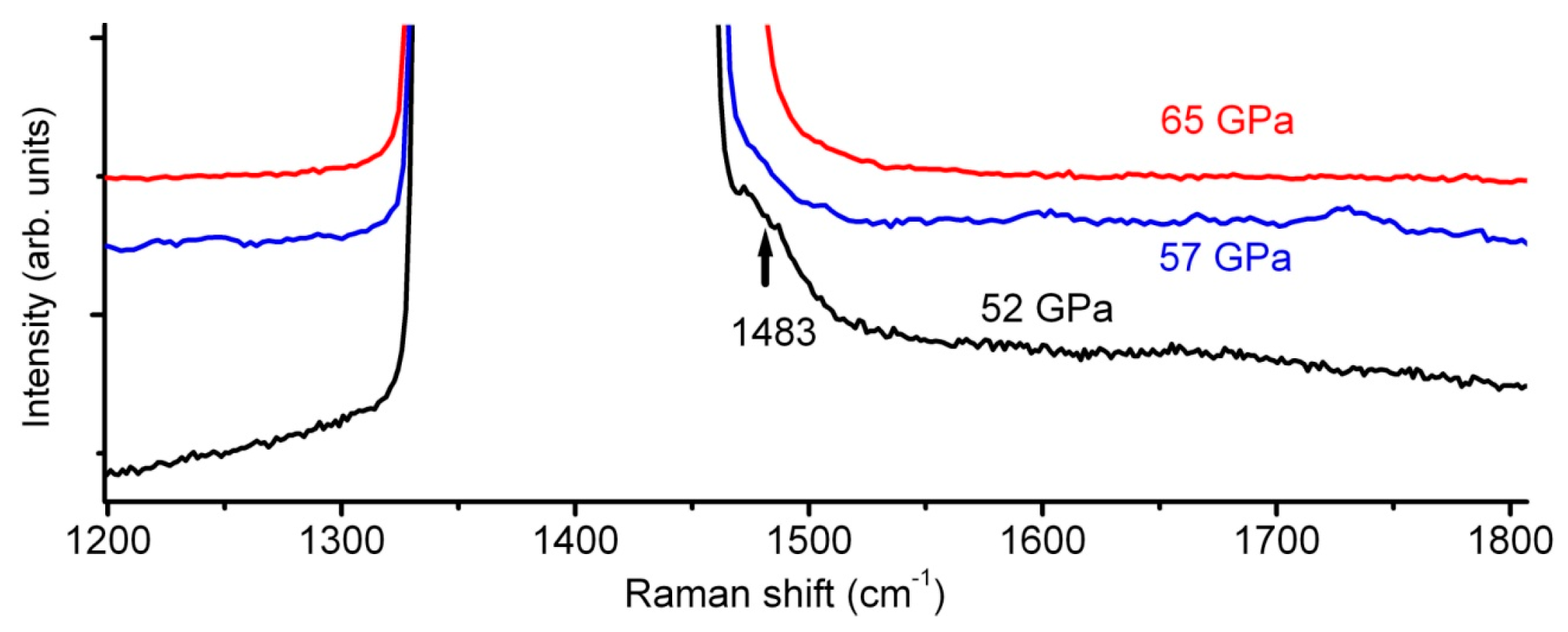


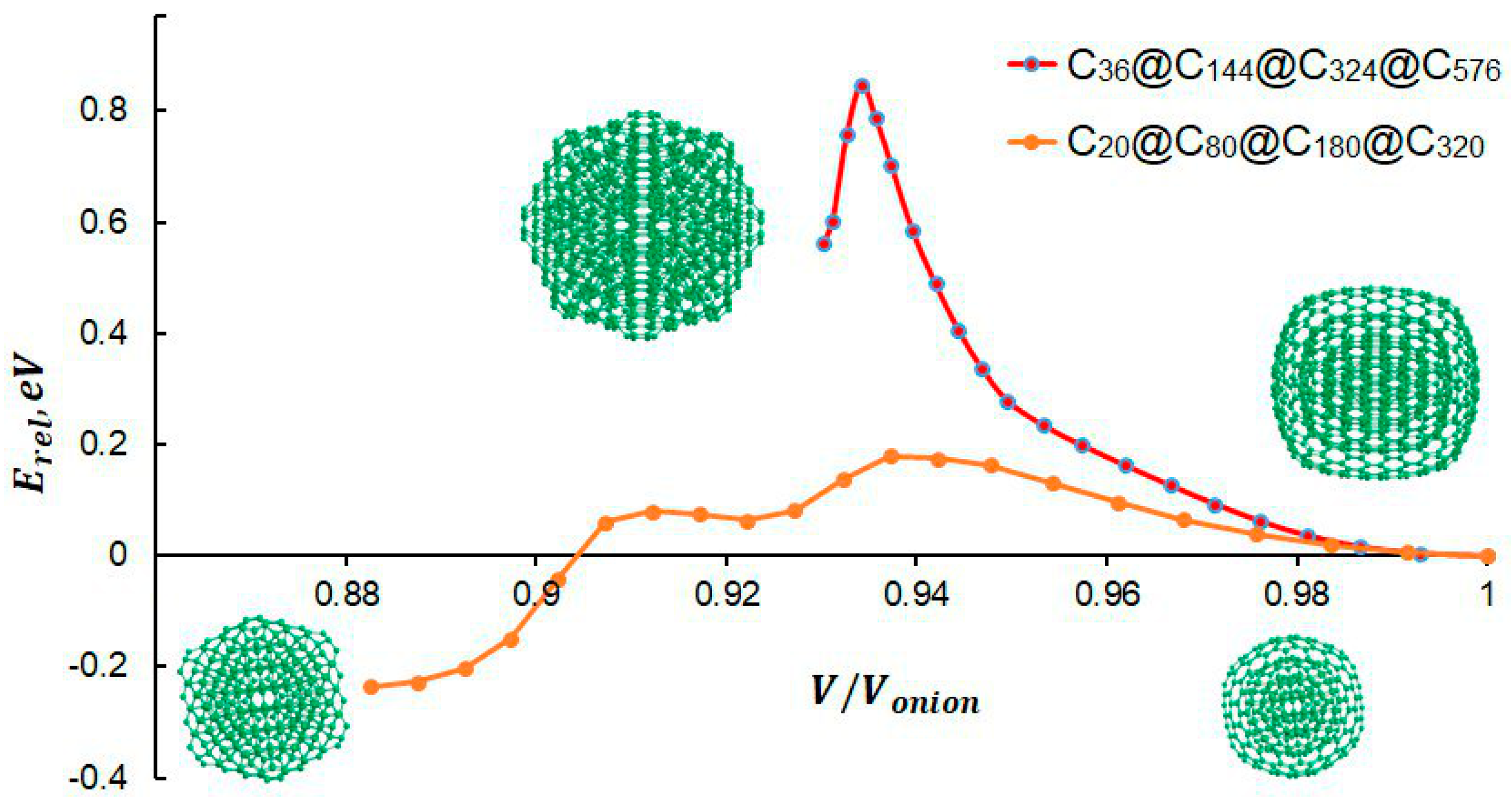
© 2018 by the authors. Licensee MDPI, Basel, Switzerland. This article is an open access article distributed under the terms and conditions of the Creative Commons Attribution (CC BY) license (http://creativecommons.org/licenses/by/4.0/).
Share and Cite
Blank, V.D.; Churkin, V.D.; Kulnitskiy, B.A.; Perezhogin, I.A.; Kirichenko, A.N.; Erohin, S.V.; Sorokin, P.B.; Popov, M.Y. Pressure-Induced Transformation of Graphite and Diamond to Onions. Crystals 2018, 8, 68. https://doi.org/10.3390/cryst8020068
Blank VD, Churkin VD, Kulnitskiy BA, Perezhogin IA, Kirichenko AN, Erohin SV, Sorokin PB, Popov MY. Pressure-Induced Transformation of Graphite and Diamond to Onions. Crystals. 2018; 8(2):68. https://doi.org/10.3390/cryst8020068
Chicago/Turabian StyleBlank, Vladimir D., Valentin D. Churkin, Boris A. Kulnitskiy, Igor A. Perezhogin, Alexey N. Kirichenko, Sergey V. Erohin, Pavel B. Sorokin, and Mikhail Yu. Popov. 2018. "Pressure-Induced Transformation of Graphite and Diamond to Onions" Crystals 8, no. 2: 68. https://doi.org/10.3390/cryst8020068



